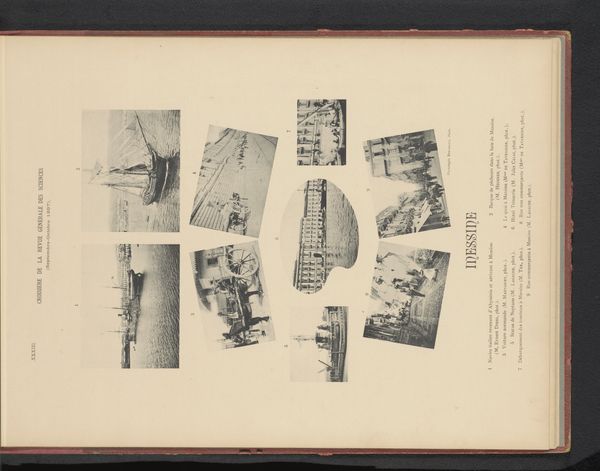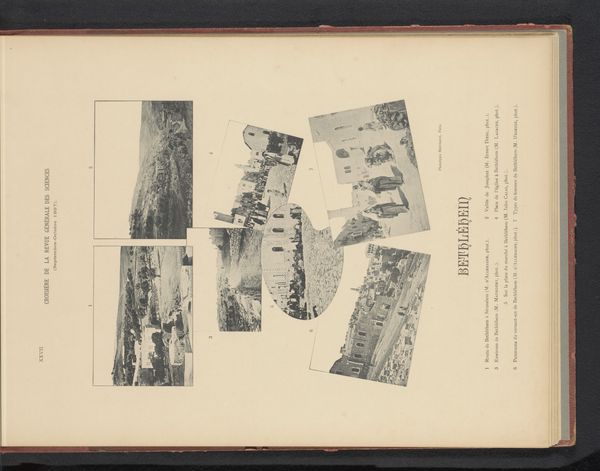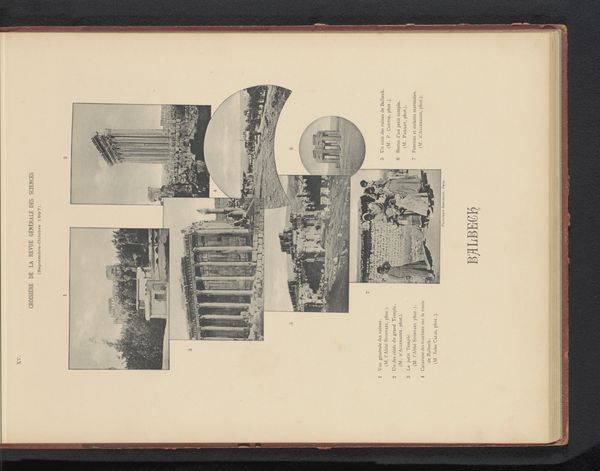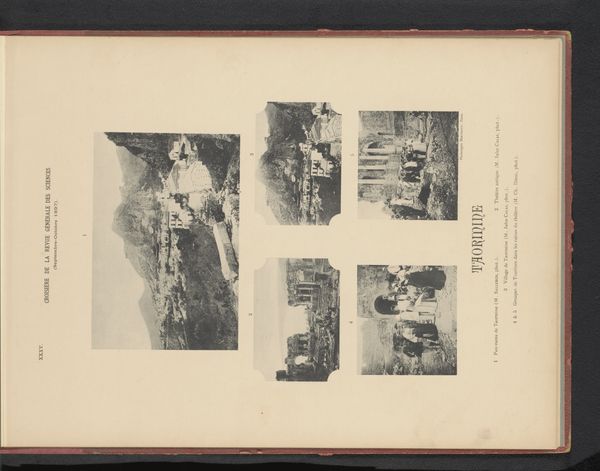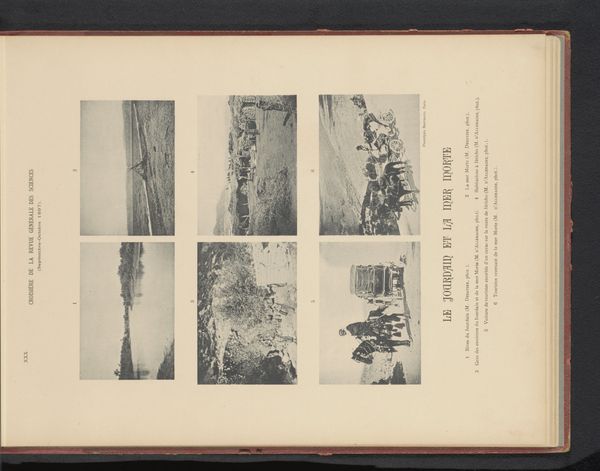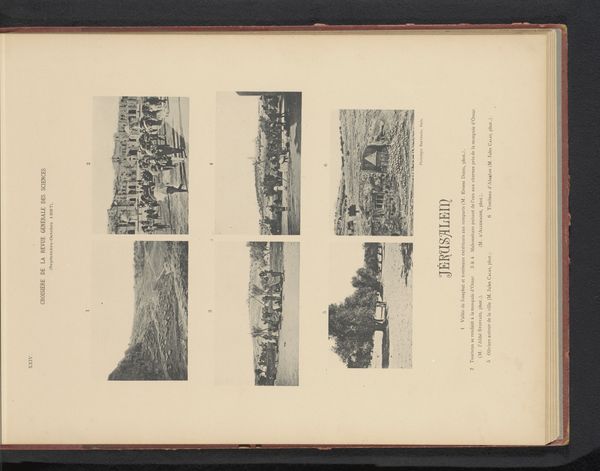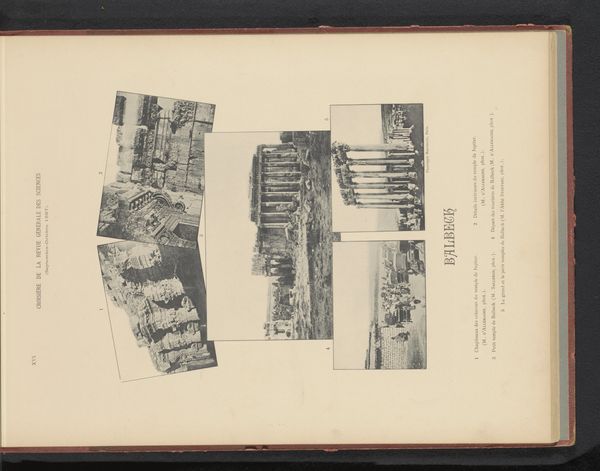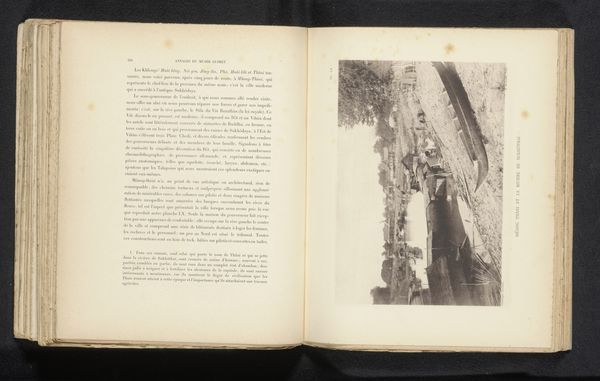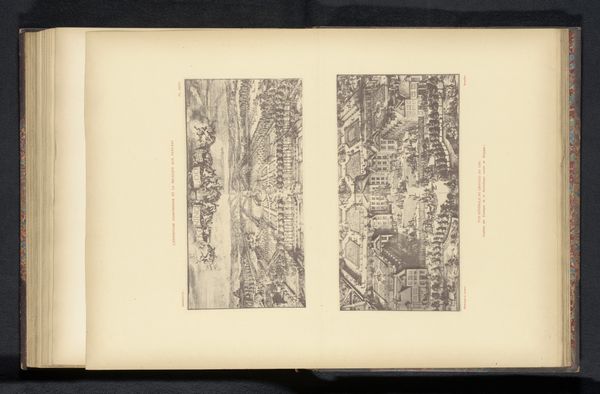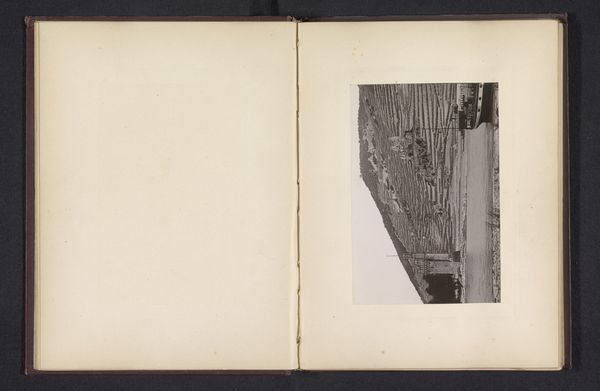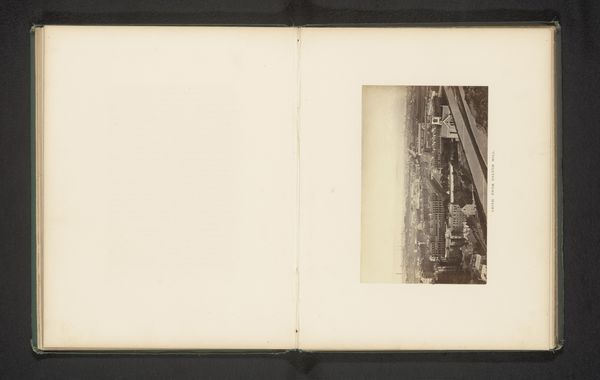
print, photography, albumen-print
# print
#
photography
#
photojournalism
#
coloured pencil
#
orientalism
#
cityscape
#
albumen-print
Dimensions: height 293 mm, width 355 mm
Copyright: Rijks Museum: Open Domain
Curator: This albumen print, dating from before 1898, presents eight different views of Damascus, Syria, captured by Jules Calas. It’s fascinating to observe how these scenes are compiled into a single page, a testament to early photographic techniques. Editor: My initial response is that there’s a real feeling of distance, almost a clinical detachment. It is beautiful, certainly, but the organization of these scenes into a kind of grid mutes the life within them. I find myself wanting to know the stories behind each scene. Curator: The organizational grid you speak of is very striking, framing these ‘oriental’ scenes with scientific detachment. Calas presents them in this way, as something to be studied, and collected. Consider how the tonal range within each image offers a consistent palette of grays and sepia, reinforcing unity. Editor: And how that aesthetic echoes broader trends of Orientalism at the time – reducing lived experiences into neatly packaged, easily consumed vignettes. It prompts important questions about representation and power, particularly considering the colonial context. These aren't just cityscapes; they’re constructed narratives viewed through a very specific, western lens. The focus isn't on Damascus as a living, breathing city, but Damascus as a set of images for the European gaze. Curator: Indeed, one might see that in the very careful arrangement. The large, panoramic view at the top and left serves as an anchor for the other scenes, almost structuring how we understand Damascus at a glance. Its scale dominates, thereby controlling the eye. Editor: Precisely, and I find myself longing for the perspectives of the people who lived these scenes daily. The text beneath each image offers only captions, devoid of their voices and narratives, further reinforcing this imbalance. Even in its apparent 'beauty,' the print embodies an act of cultural framing. Curator: The play of light and shadow certainly offers compelling graphic elements, as seen in the architectural detail and figuration. The choice of albumen, while typical of the period, lends an unparalleled richness. Editor: A richness used to present, and arguably confine, the reality of Damascus. By dissecting the image beyond surface-level aesthetics, we begin to unveil those latent, and pressing, cultural narratives. Curator: An exercise of visual exploration such as this reveals so much; perhaps a reminder of how critical analysis invites an enlightened conversation with works from another era. Editor: Ultimately, it prompts us to question whose story we’re seeing. That invitation alone might well justify our attention.
Comments
No comments
Be the first to comment and join the conversation on the ultimate creative platform.
